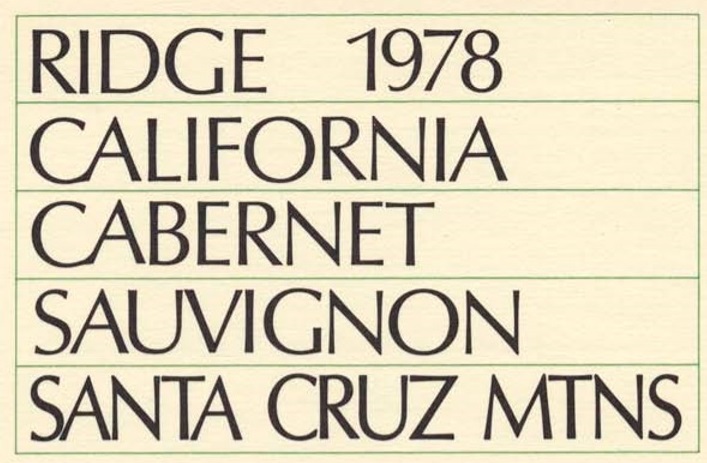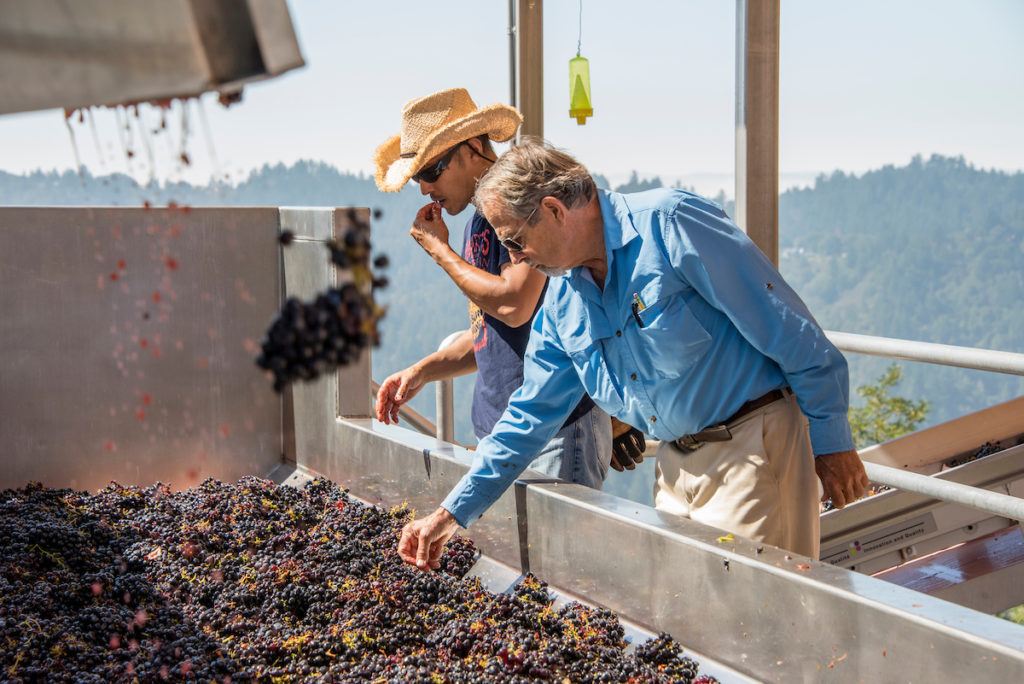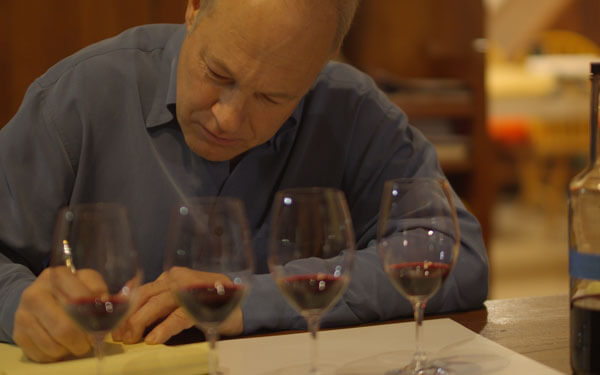Estate Cabernet: An Elegant Version of Monte Bello Made from Select Parcels
Blog Post
The Early Days: Embracing the Bordeaux Concept of Producing a “Second” Wine
The idea of making two wines from a single vineyard has been in practice at most of Bordeaux’s top growth châteaux for nearly a century. Originally not always financially viable for the châteaux or embraced by consumers, the idea of making a “second wine” really began to take hold in the 1980s as a way to ensure quality of the first wines. Ridge started producing its second wine in 1978, labeling it as Ridge Santa Cruz Mountains Cabernet Sauvignon. This new wine helped Ridge navigate challenging weather conditions during the drought of the late 1970s and during the intensely wet years of the 1980s. Declassified lots going into the Santa Cruz Mountains Cabernet allowed the Monte Bello to remain more intense, with better structure for great aging potential.

As new vineyard development started yielding fruit, the young vines’ shallow roots produced beautiful, fruit-forward wines, but lacked distinctive Monte Bello character. Until the roots of the newly-planted vines grew deeper, their wines were being declassified. By the late 1990s, we began to farm every vineyard parcel and make both wines as though they were destined to be included in the Monte Bello assemblage. During our blind tastings, several lots were still being declassified, but they had been excluded for the purpose of ensuring the long-aging potential of the Monte Bello. For a period of about three years, the Santa Cruz Mountains Cabernet Sauvignon was a more firmly-structured wine.
A Shift in Winemaking Allows for Two “First” Wines
In 2002, following a thorough review of all the vineyard parcels and their frequency of being selected for Monte Bello, we began a shift in winemaking. From the start, grapes destined for the Santa Cruz Mountains Cabernet Sauvignon would be handled more gently in the winery, limiting extraction of tannins and pressed early to make elegant wines. We would then carefully assemble the wine using the same discipline used for Monte Bello. This allowed us to make two “first” wines, differing in complexity, aging potential, and accessibility. The Santa Cruz Mountains Cabernet Sauvignon was also blended with more merlot, which further rounded out the wine and provided elegance, but required us to remove cabernet sauvignon from the name of the wine.

Over the ensuing years, additional blocks of cabernet sauvignon were planted. We also grafted one parcel of merlot over to cabernet sauvignon. This increased the tonnage of cabernet sauvignon being harvested. In 2008, we brought back a varietal designation and a more clearly stated “Estate” on the label to connect the wine to its origin at Monte Bello. We have continued to improve this wine’s style over the years as we have more thoroughly separated the vineyard parcels that go to either the Estate Cabernet Sauvignon or the Monte Bello. We also renovated the crush station at Monte Bello in 2009 to include a more gentle method for receiving, de-stemming, and sorting the fruit. This resulted in better tannin management in the fermenters.
Expressing Monte Bello’s Distinctive Terroir in Both Wines
Monte Bello is a true mountain vineyard; there are no flat parcels anywhere to be found. Forty-five parcels stretch from 1,230′ to 2,650′ with undulating slopes, terraces, and changing subsoil depths. All of these variations require selective harvesting, separate fermentation, and careful extraction to establish each wine’s style from the beginning. Once produced, all of the lots go to barrel for natural malolactic. Monte Bello and Estate Cabernet Sauvignon are then carefully assembled by blind tasting of their respective wine lots. Within the assemblages, declassifications are made so that both Monte Bello and Estate Cabernet Sauvignon are made from only the very best lots of the vintage.

On rare occasion, depending on the weather of the growing season, some areas on the margin can move from Estate Cabernet to Monte Bello and vice versa. Once assembled, both are sent to American oak barrels for extensive aging. Longer time in barrel is preferred over the use of tannin fining ingredients such as fresh egg whites or gelatin. Once bottled, the Estate Cabernet Sauvignon will age in the bottle for six to eight months prior to release. Though appealing at release, it can generally support continued bottle age over a 10 to 15 year period of time. Like Monte Bello, it evolves and reveals so much more complexity with time, but hits a plateau of secondary flavor sooner than Monte Bello does.
Wait!
In order to qualify for user related discounts, you must log in before proceeding with checkout. Click the button below to log in and receive these benefits, or close the window to continue.
Log In